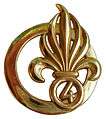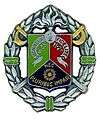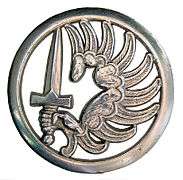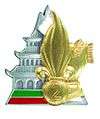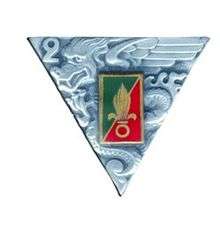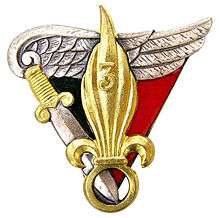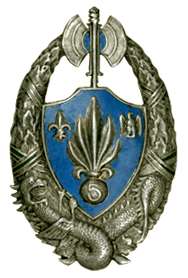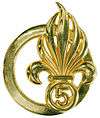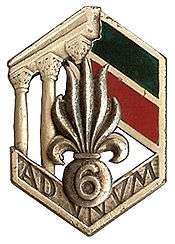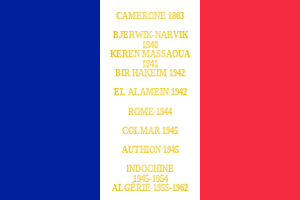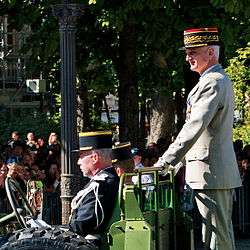French Foreign Legion
| French Foreign Legion Légion étrangère | |
|---|---|
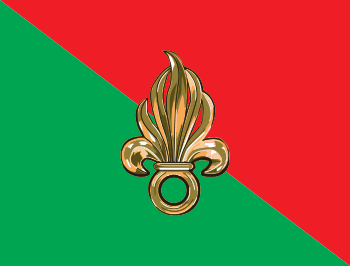 The Foreign Legion grenade emblem and colours. | |
| Active | 10 March 1831 – present |
| Country |
|
| Branch | French Army |
| Type | Foreign legion |
| Role | Foreign Infantry, Foreign airborne infantry, Foreign armoured cavalry, Foreign combat engineer, Foreign airborne engineer, Regimental Foreign military police |
| Size | c. 7,700 men in eleven regiments and one sub-unit |
| Garrison/HQ | |
| Nickname(s) |
The Legion (English) La Légion (French) |
| Motto(s) |
Legio Patria Nostra (The Legion is our Fatherland)[1] |
| Colours | Red and Green |
| March | Le Boudin[2] |
| Anniversaries | Camerone Day (30 April) |
| Engagements |
|
| Commanders | |
| Current commander | C.O.M.L.E. Division General[4] |
| Capitaine Jean Danjou (French) Captain Jean Danjou (English) | Foreign Legion Pionniers |
| Notable commanders |
Le Père Légion (French) |
| Insignia | |
| Identification symbol |
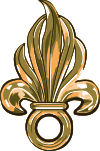 |
| Legion flash |
 |
| Abbreviation |
FFL (English) LE (French) |
The French Foreign Legion (FFL; French: Légion Étrangère (French pronunciation: [leʒjɔ̃ etʁɑ̃ʒɛʁ]), L.É.) is a military service branch of the French Army established in 1831, unique because it was created for foreign nationals willing to serve in the French Armed Forces.
Commanded by French officers, it is also open to French citizens, who amounted to 24% of the recruits in 2007.[5] The Foreign Legion is today known as a unit whose training focuses not only on traditional military skills but also on its strong esprit de corps as its men come from different countries with different cultures. This is a way to strengthen them enough to work as a team. Although it is part of the French Military, it is the only unit of the military that does not swear allegiance to France, but to the Foreign Legion itself.[6] Consequently, training is often described as not only physically challenging, but also very stressful psychologically. French citizenship may be applied for after three years' service.[7] Additionally, any soldier who becomes injured during a battle for France immediately becomes a French citizen under a provision known as "Français par le sang versé" ("French by spilled blood").[7] As of 2008, members come from 140 countries.
Since 1831, the Legion has suffered the loss of nearly 40,000 men on active service in France, Algeria, Morocco, Tunisia, Madagascar, West Africa, Mexico, Italy, the Crimea, Spain, Indo-China, Norway, Loyada, Syria, Chad, Zaïre, Lebanon, Central Africa, Gabon, Kuwait, Rwanda, Djibouti, Ex-Yugoslavia, Somalia, Republic of Congo, Ivory Coast, Afghanistan, Mali, Sahel and others.
The French Foreign Legion (FFL) was primarily used to protect and expand the French colonial empire during the 19th century. The Foreign Legion was initially stationed only in Algeria, where it took part in the pacification and development of the colony. Subsequently, the Foreign Legion was deployed in a number of conflicts, including the First Carlist War in 1835, the Crimean War in 1854, the Second Italian War of Independence in 1859, the French intervention in Mexico in 1863, the Franco-Prussian War in 1870, the Tonkin Campaign and Sino–French War in 1883, supporting growth of the French colonial empire in Sub-Saharan Africa and pacifying Algeria, the Second Franco-Dahomean War in 1892, the Second Madagascar expedition in 1895, and the Mandingo Wars in 1894.
In World War I, the Foreign Legion fought in many critical battles on the Western Front. It played a smaller role in World War II than in World War I, though having a part in the Norwegian, Syrian and North African campaigns. During the First Indochina War (1946–1954), the Foreign Legion saw its numbers swell. The FFL lost a large number of men in the catastrophic Battle of Dien Bien Phu. During the Algerian War of Independence (1954–1962), the Foreign Legion came close to being disbanded after some officers, men, and the highly decorated 1st Foreign Parachute Regiment (1er REP) took part in the Generals' putsch. Notable operations during this period included the Suez Crisis, the Battle of Algiers and various offensives launched by General Maurice Challe including Operations Oranie and Jumelles.
In the 1960s and 1970s, the Legion had a new role as a rapid deployment force to preserve French interests – not only in its former African colonies but in other nations as well; it also returned to its roots of being a unit always ready to be sent to hot-spots all around the world. Some notable operations include: the Chadian–Libyan conflict in 1969–1972 (the first time that the Legion was sent in operations after the Algerian War), 1978–1979, and 1983–1987; Kolwezi in what is now the Democratic Republic of the Congo in May 1978; Rwanda in 1990–1994; and the Ivory Coast in 2002 to the present. In 1990, the Foreign Legion was sent to the Persian Gulf as a part of Opération Daguet. In the 1990s, the Foreign Legion helped with the evacuation of French citizens and foreigners in Rwanda, Gabon and Zaire. The Foreign Legion was also deployed in Cambodia, Somalia, Sarajevo, Bosnia and Herzegovina. In the mid- to late-1990s, the Foreign Legion was deployed in the Central African Republic, Congo-Brazzaville and in Kosovo. In the 2000s, the Foreign Legion was deployed in Operation Enduring Freedom in Afghanistan, Operation Licorne in Ivory Coast, the EUFOR Tchad/RCA in Chad, and Operation Serval in the Northern Mali conflict.[8]
Many other countries have tried to emulate the French Foreign Legion model. There have been units composed of foreign recruits in China, Israel, the Netherlands, Rhodesia, Russia, and Spain.
History of the French Foreign Legion since 1831
The French Foreign Legion was created by Louis Philippe, the King of the French, on 10 March 1831 from the foreign regiments of the Kingdom of France. Recruits included soldiers from the recently disbanded Swiss and German foreign regiments of the Bourbon monarchy.[9] The Royal Ordinance for the establishment of the new regiment specified that the foreigners recruited could only serve outside France.[10] The French expeditionary force that had occupied Algiers in 1830 was in need of reinforcements and the Legion was accordingly transferred by sea in detachments from Toulon to Algeria.[7][11]
The Foreign Legion was primarily used, as part of the Armée d'Afrique, to protect and expand the French colonial empire during the 19th century, but it also fought in almost all French wars including the Franco-Prussian War, World War I and World War II. The Foreign Legion has remained an important part of the French Army and sea transport protected by the French Navy, surviving three Republics, the Second French Empire, two World Wars, the rise and fall of mass conscript armies, the dismantling of the French colonial empire, and the loss of the Foreign Legion's base, Algeria.
Conquest of Algeria 1830–1847
Created to fight "outside mainland France", the Foreign Legion was stationed in Algeria, where it took part in the pacification and development of the colony, notably by drying the marshes in the region of Algiers. The Foreign Legion was initially divided into six "national battalions" (Swiss, Poles, Germans, Italians, Spanish, and Dutch-Belgian).[12] Smaller national groups, such as the ten Englishmen recorded in December 1832, appear to have been placed randomly.
In late 1831, the first legionnaires landed in Algeria, the country that would be the Foreign Legion's homeland for 130 years and shape its character. The early years in Algeria were hard on the legion because it was often sent to the worst postings and received the worst assignments, and its members were generally uninterested in the new colony of the French.[13] The Legion served alongside the Battalions of Light Infantry of Africa, formed in 1832, which was a penal military unit made up of men with prison records who still had to do their military service or soldiers with serious disciplinary problems.
The Foreign Legion's first service in Algeria came to an end after only four years, as it was needed elsewhere.
Carlist War 1835–1839
To support Isabella's claim to the Spanish throne against her uncle, the French government decided to send the Foreign Legion to Spain. On 28 June 1835, the unit was handed over to the Spanish government. The Foreign Legion landed via sea at Tarragona on 17 August with around 1,400 who were quickly dubbed Los Algerinos (the Algerians) by locals because of their previous posting.
The Foreign Legion's commander immediately dissolved the national battalions to improve the esprit de corps. Later, he also created three squadrons of lancers and an artillery battery from the existing force to increase independence and flexibility. The Foreign Legion was dissolved on 8 December 1838, when it had dropped to only 500 men. The survivors returned to France, many reenlisting in the new Foreign Legion along with many of their former Carlist enemies.
Crimean War

On 9 June 1854, the French ship Jean Bart embarked four battalions of the Foreign Legion for the Crimean Peninsula. A further battalion was stationed at Gallipoli as brigade depot.[14] Eight companies drawn from both regiments of the Foreign Legion took part in the Battle of Alma (20 September 1854). Reinforcements by sea brought the Legion contingent up to brigade strength. As the "Foreign Brigade", it served in the Siege of Sevastopol, during the winter of 1854–1855.
The lack of equipment was particularly challenging and cholera hit the Allied expeditionary force. Nevertheless, the "leather bellies" (the nickname given to the legionnaires by the Russians because of the large cartridge pouches that they wore attached to their waist-belts), performed well. On 21 June 1855, the Third Battalion, left Corsica for the Crimea.
On 8 September the final assault was launched on Sevastopol. Two days later, the Second Foreign Regiment with flags and band playing ahead, marched through the streets of Sevastopol. Although initial reservations had been expressed about whether the Legion should be used outside Africa,[14] the Crimean experience established its suitability for service in European warfare, as well as making a cohesive single entity of what had previously been two separate foreign regiments.[15] Total Legion casualties in the Crimea were 1,703 killed and wounded.
Italian Campaign 1859
Like the rest of the "Army of Africa", the Foreign Legion provided detachments in the campaign of Italy. Two foreign regiments, grouped with the 2nd Regiment of Zouaves, were part of the Second Brigade of the Second Division of Mac Mahon's Corps. The Foreign Legion acquitted itself particularly well against the Austrians at the battle of Magenta (4 June 1859) and at the Battle of Solferino (24 June). Legion losses were significant and the 2nd Foreign Regiment lost Colonel Chabrière, its commanding officer. In gratitude, the city of Milan awarded, in 1909, the "commemorative medal of deliverance", which still adorns the regimental flags of the Second Regiment.[16]
Mexican Expedition 1863–1867
The 38,000 strong French expeditionary force dispatched to Mexico via sea between 1862 and 1863 included two battalions of the Foreign Legion, increased to six battalions by 1866. Small cavalry and artillery units were raised from legionnaires serving in Mexico. The original intention was that Foreign Legion units should remain in Mexico for up to six years to provide a core for the Imperial Mexican Army.[17] However the Legion was withdrawn with the other French forces during February–March 1867.
It was in Mexico on 30 April 1863 that the Legion earned its legendary status. A company led by Captain Jean Danjou, numbering 62 Legionnaires and 3 Legion officers, was escorting a convoy to the besieged city of Puebla when it was attacked and besieged by three thousand Mexican loyalists,[18] organised in two battalions of infantry and cavalry, numbering 2,200 and 800 respectively. The Legion detachment under Captain Jean Danjou, Sous-Lieutenant Jean Vilain, Sous-Lieutenant Clément Maudet[19] made a stand in the Hacienda de la Trinidad - a farm near the village of Camarón. When only six survivors remained, out of ammunition, a bayonet assault was launched in which three of the six were killed. The remaining three wounded men were brought before the Mexican commander Colonel Milan, who allowed them to return to the French lines as an honor guard for the body of Captain Danjou. The captain had a wooden hand, which was later returned to the Legion and is now kept in a case in the Legion Museum at Aubagne, and paraded annually on Camerone Day. It is the Foreign Legion's most precious relic.
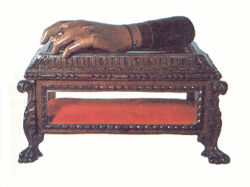
During the Mexican Campaign, 6,654 French died.[20] Among these losses, 1,918[20] of the deaths were from a single regiment of the Legion, a fact that testifies to the importance of the Legion's role in the campaign.[20]
Franco-Prussian War 1870
According to French law, the Foreign Legion was not to be used within Metropolitan France except in the case of a national invasion,[21] and was consequently not a part of Napoleon III's Imperial Army that capitulated at Sedan. With the defeat of the Imperial Army, the Second French Empire fell and the Third Republic was created.
The new Third Republic was desperately short of trained soldiers following Sedan, so the Foreign Legion was ordered to provide a contingent. On 11 October 1870 two provisional battalions disembarked via sea at Toulon, the first time the Foreign Legion had been deployed in France itself. It attempted to lift the Siege of Paris by breaking through the German lines. It succeeded in retaking Orléans, but failed to break the siege. In January 1871, France capitulated but civil war soon broke out, which led to revolution and the short-lived Paris Commune. The Foreign Legion participated in the suppression of the Commune,[22] which was crushed with great bloodshed.
Tonkin Campaign and Sino-French War 1883–1888
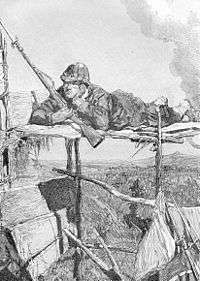
The Foreign Legion's First Battalion (Lieutenant-Colonel Donnier) sailed to Tonkin in the autumn of 1883, during the period of undeclared hostilities that preceded the Sino–French War (August 1884 to April 1885), and formed part of the attack column that stormed the western gate of Son Tay on 16 December. The Second and Third Infantry Battalions (chef de bataillon Diguet and Lieutenant-Colonel Schoeffer) were also deployed to Tonkin shortly afterwards, and were present in all the major campaigns of the Sino-French War. Two Foreign Legion companies led the defence at the celebrated Siege of Tuyên Quang (24 November 1884 to 3 March 1885). In January 1885 the Foreign Legion's 4th Battalion (chef de bataillon Vitalis) was deployed to the French bridgehead at Keelung (Jilong) in Formosa (Taiwan), where it took part in the later battles of the Keelung Campaign. The battalion played an important role in Colonel Jacques Duchesne's offensive in March 1885 that captured the key Chinese positions of La Table and Fort Bamboo and disengaged Keelung.
In December 1883, during a review of the Second Legion Battalion on the eve of its departure for Tonkin to take part in the Bắc Ninh Campaign, General François de Négrier pronounced a famous mot: Vous, légionnaires, vous êtes soldats pour mourir, et je vous envoie où l’on meurt! ('You, Legionnaires, you are soldiers in order to die, and I'm sending you to where one dies!')
Colonisation of Africa

As part of the Army of Africa, the Foreign Legion contributed to the growth of the French colonial empire in Sub-Saharan Africa. Simultaneously, the Legion took part to the pacification of Algeria, plagued by various tribal rebellions and razzias.
Second Franco-Dahomean War 1892–1894
In 1892, King Behanzin was threatening the French protectorate of Porto-Novo in modern-day Benin and France decided to intervene. A battalion, led by commandant Faurax, was formed from two companies of the First Foreign Regiment and two others from the second regiment. From Cotonou, the legionnaires marched to seize Abomey, the capital of the Kingdom of Dahomey. Two and a half months were needed to reach the city, at the cost of repeated battles against the Dahomean warriors, especially the Amazons of the King. King Behanzin surrendered and was captured by the legionnaires in January 1894.
Second Madagascar Expedition 1894–1895
In 1895, a battalion, formed by the First and Second Foreign Regiments, was sent to the Kingdom of Madagascar, as part of an expeditionary force whose mission was to conquer the island. The foreign battalion formed the backbone of the column launched on Antananarivo, the capital of Madagascar. After a few skirmishes, the Queen Ranavalona III promptly surrendered.[23][24] The Foreign Legion lost 226 men, of whom only a tenth died in actual fighting. Others, like much of the expeditionary force, died from tropical diseases.[23] Despite the success of the expedition, the quelling of sporadic rebellions would take another eight years until 1905, when the island was completely pacified by the French under Joseph Gallieni.[23] During that time, insurrections against the Malagasy Christians of the island, missionaries and foreigners were particularly terrible.[25] Queen Ranavalona III was deposed in January 1897 and was exiled to Algiers in Algeria, where she died in 1917.[26]
Mandingo War 1898
From 1882 until his capture, Samori Ture, ruler of the Wassoulou Empire, fought the French colonial army, defeating them on several occasions, including a notable victory at Woyowayanko (2 April 1882), in the face of French heavy artillery. Nonetheless, Samori was forced to sign several treaties ceding territory to the French between 1886 and 1889. Samori began a steady retreat, but the fall of other resistance armies, particularly Babemba Traoré at Sikasso, permitted the colonial army to launch a concentrated assault against his forces. A battalion of two companies from the 2nd Foreign Regiment was created in early 1894 to pacify the Niger. The Legionnaires' victory at the fortress of Ouilla and police patrols in the region accelerated the submission of the tribes. On 29 September 1898, Samori Ture was captured by the French Commandant Gouraud and exiled to Gabon, marking the end of the Wassoulou Empire.



Marching Regiments of the Foreign Legion
World War I 1914–1918
The annexation of Alsace and Lorraine by Germany in 1871 led to numerous volunteers from the two regions enlisting in the Foreign Legion, which gave them the option of French citizenship at the end of their service[27]
With the declaration of war on 29 July 1914, a call was made for foreigners resident in France to support their adopted country. While many would have preferred direct enlistment in the regular French Army, the only option immediately available was that of the Foreign Legion. On one day only (3 August 1914) a reported 8,000 volunteers applied to enlist in the Paris recruiting office of the Legion.
In World War I, the Foreign Legion fought in many critical battles on the Western Front, including Artois, Champagne, Somme, Aisne, and Verdun (in 1917), and also suffered heavy casualties during 1918. The Foreign Legion was also in the Dardanelles and Macedonian front, and was highly decorated for its efforts. Many young foreigners volunteered for the Foreign Legion when the war broke out in 1914. There were marked differences between the idealistic volunteers of 1914 and the hardened men of the old Legion, making assimilation difficult. Nevertheless, the old and the new men of the Foreign Legion fought and died in vicious battles on the Western front, including Belloy-en-Santerre during the Battle of the Somme, where the poet Alan Seeger, after being mortally wounded by machine-gun fire, cheered on the rest of his advancing battalion.[28]
Interwar Period 1918–1939


While suffering heavy casualties on the Western Front the Legion had emerged from World War I with an enhanced reputation and as one of the most highly decorated units in the French Army .[29] In 1919, the government of Spain raised the Spanish Foreign Legion and modeled it after the French Foreign Legion.[29] General Jean Mordacq intended to rebuild the Foreign Legion as a larger military formation, doing away with the legion's traditional role as a solely infantry formation.[29] General Mordacq envisioned a Foreign Legion consisting not of regiments, but of divisions with cavalry, engineer, and artillery regiments in addition to the legion's infantry mainstay.[29] In 1920, decrees ordained the establishment of regiments of cavalry and artillery.[29] Immediately following the armistice the Foreign Legion experienced an increase of enlistments.[30] The Foreign Legion began the process of reorganizing and redeploying to Algeria.[29]
The Legion played a major part in the Rif War of 1920–25. In 1932, the Foreign Legion consisted of 30,000 men, serving in 6 multi-battalion regiments including the 1st Foreign Infantry Regiment 1er REI – Algeria, Syria and Lebanon; 2nd Foreign Infantry Regiment 2ème REI, 3rd Foreign Infantry Regiment 3ème REI, and 4th Foreign Infantry Regiment 4ème REI – Morocco, Lebanon; 5th Foreign Infantry 5ème REI – Indochina; and 1st Foreign Cavalry Regiment 1er REC – Lebanon, Tunisia and Morocco.
In 1931, Général Paul-Frédéric Rollet assumed the role of 1st Inspector of the Foreign Legion, a post created at his initiative. While Colonel Regimental Commander of the 1st Foreign Regiment 1er RE (1925-1931), Rollet had planned the centennial celebrations of the Legion's 100th year anniversary on Camaron day of April 30, 1931. He was subsequently credited with creating much of the modern mystique of the Legion by restoring or creating many of its traditions.
World War II 1939–1945
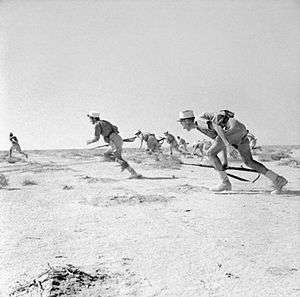
The Foreign Legion played a smaller role in World War II in mainland Europe than in World War I, though there was involvement in many exterior theatres of operations, notably sea transport protection through to the Norwegian, Syria-Lebanon, and North African campaigns. The 13th Demi-Brigade, formed for service in Norway, found itself in the UK at the time of the French Armistice (June 1940), was deployed to the British 8th Army in North Africa and distinguished itself in the Battle of Bir Hakeim (1942). Reflecting the divisions of the time, part of the Foreign Legion joined the Free French movement while another part served the Vichy government. German legionnaires were incorporated into the Wehrmacht's 90th Light Infantry Division in North Africa.[31]
The Syria–Lebanon Campaign of June 1941 saw legionnaire fighting legionnaire as the 13e D.B.L.E clashed with the 6th Foreign Infantry Regiment 6e REI at Damascus. Nevertheless, many legionnaires of the 6th Foreign Infantry Regiment 6e (I dissolved on December 31, 1941) integrated the Marching Regiment of the Foreign Legion R.M.L.E in 1942. Later, a thousand of the rank-and-file of the Vichy Legion unit joined the 13e D.B.L.E. of the Free French forces which were also part as of September 1944 of Jean de Lattre de Tassigny's successful Amalgam of the French Liberation Army (French: Armée française de la Libération,), the (400,000 men) amalgam consisted of the Armistice Army, the Free French Forces and the French Forces of the Interior which formed Army B and were later part of the French 1st Army with forces also issued from the French Resistance.
Alsace-Lorraine
Following World War II, many French-speaking German former soldiers joined the Foreign Legion to pursue a military career, an option no longer possible in Germany including French German soldiers of Malgré-nous. It would have been considered problematic if the men from Alsace-Lorraine didn't speak French. These French-speaking former German soldiers made up as much as 60 percent of the Legion during the war in Indochina. Contrary to popular belief however, French policy was to exclude former members of the Waffen-SS, and candidates for induction were refused if they exhibited the tell-tale blood type tattoo, or even a scar that might be masking it.[32]
The high percentage of Germans was contrary to normal policy concerning a single dominant nationality however, and in more recent times Germans have made up a much smaller percentage of the Foreign Legion's composition.[33]
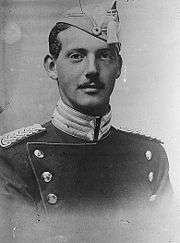
First Indochina War 1946–1954
During the First Indochina War (1946–54) the Foreign Legion saw its numbers swell due to the incorporation of World War II veterans. Although the Foreign Legion distinguished itself in a territory where it had served since the 1880s, it also suffered a heavy toll during this war. Constantly being deployed in operations, units of the Legion suffered particularly heavy losses in the climatic Battle of Dien Bien Phu, before the fortified valley finally fell on May 7, 1954. During the eight-year war, the Legion suffered the loss of 12,000 of its own men, almost 4 legionnaires per day for 8 years.
While only one of several Legion units involved in Indochina, the 1st Foreign Parachute Battalion (1er BEP) particularly distinguished itself, while being annihilated twice. It was renamed the 1st Foreign Parachute Regiment (1er REP) after its third reformation.[34]
The 1er BEP sailed to Indochina on November 12 and was then engaged in combat operations in Tonkin.[34] On November 17, 1950; the battalion parachuted into That Khé and suffered heavy losses at Coc Xa. Reconstituted on March 1, 1951 the battalion participated in combat operations at Cho Ben, on the Black River and in Annam.[34] On November 21, 1953; the reconstituted 1er BEP was parachuted into the Dien Bien Phu.[34] In this battle, the unit lost 575 killed and missing.[34] Reconstituted for the third time on May 19, 1954, the battalion left Indochina on February 8, 1955.[34] The 1er BEP received 5 citations and the fourragère of the colors of the Médaille militaire[34] for its service in Indochina. The 1er BEP became the 1st Foreign Parachute Regiment (1er REP) in Algeria on September 1, 1955.
Dien Bien Phu fell on May 7, 1954 at 1730.[35] The couple of hectares comprising the battlefield today are filled with corn fields centered by a stele which commemorates the sacrifices of those who died there. While the garrison of Dien Bien Phu included French regular, North African and locally recruited (Indochinese) units, the battle has become associated particularly with the paratroops of the Foreign Legion.
Algerian War 1954–1962
The Algerian War of Independence (1954–62) was a highly traumatic conflict for France. For the Legion, it ended with the enforced abandonment of the historic barracks and command center at Sidi Bel Abbès established in 1842 and suffering the loss of 2000 of its own men, from all ranks, on average 4 legionnaires per week for eight years.
Para Foreign Legion
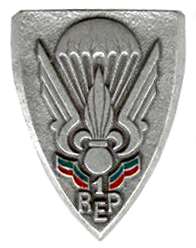
Legion Lieutenant Colonel Pierre Paul Jeanpierre (1912-1958).[36]
Constantly on call throughout the country, the legion was heavily engaged in fighting against the National Liberation Front and the Armée de Libération Nationale (ALN). The main activity during the period 1954-62 were part of the tasked operations of the 10th Parachute Division and 25th Parachute Division. The 1st Foreign Parachute Regiment 1er REP, was part of the branch hierarchy and command of the 10th Parachute Division (France) 10ème DP and the 2nd Foreign Parachute Regiment 2ème REP, was part of the branch hierarchy and command of the 25th Parachute Division (France) 25ème DP. However, it's worth noting that while both the 1st Foreign Parachute Regiment (1er REP) and the 2nd Foreign Parachute Regiment (2ème REP) were part of the operations of French Parachute Divisions (10ème DP and 25ème DP established in 1956); the Legion 1st Foreign Parachute Regiment (1er REP) and the Legion 2nd Foreign Parachute Regiment (2ème REP) are older than the French divisions. The 1er REP was the former 3 time reconstituted 1st Foreign Parachute Battalion (1er BEP) and the 2ème REP was the former 2nd Foreign Parachute Battalion (2ème BEP); both battalions renamed with their Legionnaires transferred from Indochina on August 1, 1954 to Algeria by November 1, 1954 in a period of 4 months and both tracing their origins to the Parachute Company of the 3rd Foreign Infantry Regiment commanded by Legion Lieutenant Jacques Morin attached to the III/1er R.C.P.[37]
Also worth noting, with the start of the War in Algeria on November 1, 1954; the two foreign participating parachute battalions back from Indochina being the 1st Foreign Parachute Battalion (1er BEP, III Formation) and the 2nd Foreign Parachute Battalion (2ème BEP) were not part of any French parachute divisions yet and were not designated as regiments either until respectively September and December 1, 1955.
Main operations during the Algerian War included the Battle of Algiers and the Batlle of the Frontiers carried by 60,000 soldiers including French and Foreign Legion Paratroopers. For paratroopers of the Legion, the 1st Foreign Parachute Regiment (1er REP) and 2nd Foreign Parachute Regiment (2ème REP), were the only known foreign active parachute regiments, exclusively commanded by Pierre Paul Jeanpierre for the 1er REP[36] and the paratrooper commanders of the 2ème REP.[38] The remainder of French paratrooper units of the French Armed Forces were commanded by Jacques Massu, Buchond, Marcel Bigeard, Paul Aussaresses. In relation to the Legion, other offensives in the mountains in 1959 included operations, Jumelles, Cigales and Ariege in the Aures and last in Kabylie.[36]
The championing Flagship of the 1st Foreign Parachute Regiment 1er REP was tarnished by the general's putsch of 1961.[36]
Generals' Putsch 1961 and reduction of Foreign Legion
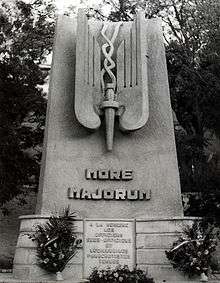
Following the independence of Algeria in 1962, the Foreign Legion was reduced in numbers but not disbanded, unlike most other units comprising the Armée d'Afrique: Zouaves, Tirailleurs, Méharistes, Harkis, Goums, Chasseurs d'Afrique and all but one of the Spahi regiments.
The Foreign Legion faced the possibility of disbandment after the highly decorated 1st Foreign Parachute Regiment (1er REP) was readied to take part in the General's Putsch. Upon being notified that this regiment was to be disbanded and that they were to be reassigned, legionnaires of the 1er REP burned the Chinese pavilion acquired following the Siege of Tuyên Quang in 1884. The relics from the Legion's history museum, including the wooden hand of Captain Jean Danjou, subsequently accompanied the Legion to France. Also removed from Sidi Bel Abbès were the symbolic Legion remains of General Paul-Frédéric Rollet ( The Father of the Legion ), Legion officer Prince Count Aage of Rosenborg, and Legionnaire Heinz Zimmermann (the last fatal casualty in Algeria).
It was at this time that the Legion acquired its parade song "Non, je ne regrette rien" (No, I don't regret anything), a 1960 Edith Piaf song sung by Sous-Officiers and legionnaires as they left their barracks for re-deployment following the Algiers putsch of 1961. The song has remained a part of Legion heritage since.
The 1st Foreign Parachute Regiment 1er REP was disbanded on April 30, 1961.[36] However, the 2nd Foreign Parachute Regiment 2ème REP prevailed in existence.
The effect was to retain the Foreign Legion as a professional force that could be used for military interventions outside France and not involve the politically unpopular use of French conscripts. The subsequent abolition of conscription in France in 2001 and the creation of an entirely professional army might be expected to put the legion's long-term future at risk but as of 2013 this has not been the case.
Post-colonial Africa

By the mid-1960s the Legion had lost its traditional and spiritual home in Algeria and elite units had been dissolved.[34] President de Gaulle considered disbanding it altogether but after being downsized to 8,000 men and stripped of all heavy weaponry the Legion was relocated to metropolitan France.[40] The Legion now had a new role as a rapid intervention force to preserve French interests.
Intervention actions in Africa following the Algerian War included the Chadian–Libyan conflict in 1969–72, 1978–79, and 1983–87; Kolwezi in what is now the Democratic Republic of the Congo in May 1978; Rwanda in 1990–94; and the Ivory Coast in 2002 to the present.
1962–present
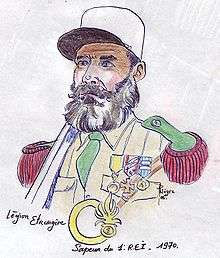
- 1969–1971 : interventions in Chad
- 1978–present : Peacekeeping operations part of the United Nations Interim Force in Lebanon during the Global War on Terror
- 1978–1978 : Battle of Kolwezi (Zaïre)
- 1981–1984 : Peacekeeping operations in Lebanon at the corps of the United Nations Multinational Force during the Lebanese Civil War along with the 31ème Brigade which included the Operational Group of the Foreign Legion. The Multinational Force also included HM's 1st The Queen's Dragoon Guards, American contingents of United States Marine Corps and the United States Navy, 28 exclusive French Armed Forces regiments including French paratroopers regiments, companies, units of the 11th Parachute Brigade along with the 2nd Foreign Parachute Regiment, the Irish Armed Forces and units of the National Gendarmerie, Italian paratroopers from the Folgore Brigade, infantry units from the Bersaglieri regiments and Marines of the San Marco Battalion.
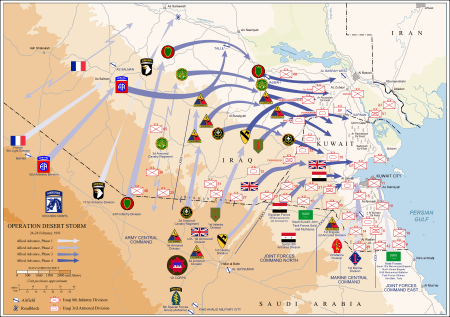
Gulf War 1990–1991
In September 1990, the 1st Foreign Cavalry Regiment 1er REC, the 2nd Foreign Parachute Regiment 2ème REP, the 2nd Foreign Infantry Regiment 2ème REI, and the 6th Foreign Engineer Regiment 6ème REG were sent to the Persian Gulf as a part of Opération Daguet along with the 1st Spahi Regiment, the 11th Marine Artillery Regiment, the 3rd Marine Infantry Regiment, the 21st Marine Infantry Regiment, the French Army Light Aviation, the Marine Infantry Tank Regiment, French paratroopers regiments including components of the 35th Parachute Artillery Regiment 35ème RAP, the 1st Parachute Hussard Regiment 1er RHP, the 17th Parachute Engineer Regiment 17ème RGP and other airborne contingents.
The Legion force, mainly comprising 27 different nationalities,[41] was attached to the French 6th Light Armoured Division 6ème D.L.B, whose mission was to protect the Coalition's left flank while cover fired by the marine's artillery. During the Gulf War, DINOPS operated in support of the U.S. Army's 82nd Airborne Division, and provided the EOD services to the division. After the cease fire took hold they conducted a joint mine clearing operation alongside an Royal Australian Navy Clearance Diver Team Unit.
After the four-week air campaign, coalition forces launched the ground offensive. They quickly penetrated deep into Iraq, with the Legion taking the Al Salman Airport, meeting little resistance. The war ended after a hundred hours of fighting on the ground, which resulted in very light casualties for the Legion.
Post 1991
- 1991: Evacuation of French citizens and foreigners in Rwanda, Gabon and Zaire.
- 1992: Cambodia and Somalia
- 1993: Sarajevo, Bosnia and Herzegovina
- 1995: Rwanda
- 1996: Central African Republic
- 1997: Congo-Brazzaville
- Since 1999: KFOR in Kosovo and Macedonia
Global War on Terror 2001–present
- 2001–present: Operation Enduring Freedom in Afghanistan
- 2002–2003: Operation Licorne in Ivory Coast
- 2008–2008: EUFOR Tchad/RCA in Chad
- 2013–2014: Operation Serval in the Northern Mali conflict[42]
Composition & organization
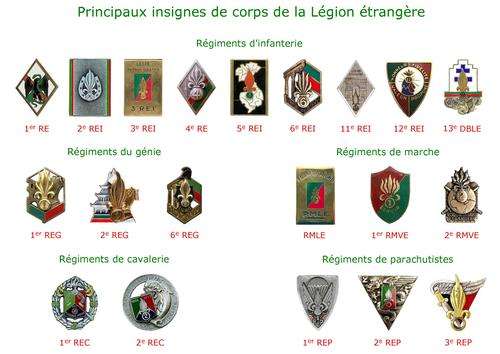
Prior to the end of the Algerian War the legion had not been stationed in mainland France except in wartime. Until 1962, the Foreign Legion headquarters was located in Sidi Bel Abbès, Algeria. Today, some units of the Légion are in Corsica or overseas possessions (mainly in French Guiana, guarding Guiana Space Centre), while the rest are in the south of mainland France. Current headquarters is in Aubagne, France, just outside Marseille.
- Mainland France
- 1st Foreign Regiment (1er RE), based in Aubagne, France (HQ, selection and administration, other specific missions)
- 1st Foreign Cavalry Regiment (1er REC), based in Camp de Carpiagne (Bouches-du-Rhône), France (armoured troops)
- 1st Foreign Engineer Regiment (1er REG) former 6th Foreign Engineer Regiment (6ème REG), based in Laudun, France
- 2nd Foreign Infantry Regiment (2ème REI), based in Nîmes, France
- 2nd Foreign Engineer Regiment (2ème REG), based in St Christol, France
- 2nd Foreign Parachute Regiment (2ème REP), based in Calvi, Corsica
- 4th Foreign Regiment (4èmeRE), based in Castelnaudary (training), France
- Foreign Legion Recruiting Group (G.R.L.E), based at Fort de Nogent ( military recruiting and other), France
- 13th Demi-Brigade of the Foreign Legion (13ème DBLE), based at Camp Larzac, France.
- French Overseas Territories and Overseas Collectives, France
- 3rd Foreign Infantry Regiment (3ème REI), based in French Guiana
- Foreign Legion Detachment in Mayotte (DLEM)
Current deployments
These are the following deployments:[43]
Note: English names for countries or territories are in parentheses.
- Opérations extérieures (other than at home bases or on standard duties)
- Guyane (French Guiana) Mission de presence sur l'Oyapok – Protection – 3ème REI Protection CSG ; 2ème REP / CEA; 2ème REI / 4ème compagnie
- Afghanistan Intervention 1er REC / 3° escadron (1 peloton); 2ème REI / 4° compagnie OMLT; 2ème REG / 1ère compagnie
- Mayotte (Departmental Collectivity of Mayotte) Prevention DLEM Mission de souveraineté
- Gabon Prevention 2ème REP / 3ème compagnie – 4ème compagnie
| Acronym | French Name | English Meaning |
|---|---|---|
| CEA | Compagnie d'éclairage et d'appuis | Reconnaissance and Support Company |
| CAC | Compagnie anti-char | Anti-Tank Company |
| UCL | Unité de commandement et de logistique | Unit of Command and Logistics |
| EMT | État-major tactique | Tactical Command Post |
| NEDEX | Neutralisation des explosifs | Neutralisation and Destruction of Explosives |
| OMLT | Operational Mentoring and Liaison Team (The official name for this branch is in English) | |
-
ERC 90 light tank of the 13th Demi-Brigade of the Foreign Legion (13èmeDBLE) in Djibouti.
-
Paratroopers of 2ème REP in Djibouti.
-
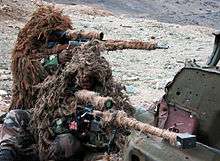
Snipers of the 2nd Foreign Infantry Regiment (2èmeREI) using a PGM Hécate and a FR-F2 in Afghanistan in 2005
-

Legionnaire of 2ème REI with an M2 heavy machine gun.
-
Legionnaire using an FR F2 in Afghanistan (2007).
-

Legionnaires in Paris on Vigipirate, France's counter-terrorism security alert system, in November 2010.
DINOPS, PCG and Commandos of the French Foreign Legion
- 2ème REP Commando Parachute Group ( GCP ); Pathfinders qualified in Direct Actions, Special Recco and IMEX.
- 1st Foreign Engineer Regiment 1er REG; Parachute Underwater Demolition P.C.G Teams (Combat Engineer Divers, French: Plongeurs du Combat du Génie), former DINOPS Teams of Nautical Subaquatic Intervention Operational Detachment (French: Détachement d'Intervention Nautique Operationnelle Subaquatique).
- 2nd Foreign Engineer Regiment 2ème REG; Parachute Underwater Demolition P.C.G Teams (Combat Engineer Divers, French: Plongeurs du Combat du Génie), former DINOPS Teams of Nautical Subaquatic Intervention Operational Detachment (French: Détachement d'Intervention Nautique Operationnelle Subaquatique) and Mountain Commando Group ( GCM ) in some cases as double specialties.[44]
Recruitment process
| Arrival | 1 to 3 days in a Foreign Legion Information Center. Reception, information, and terms of contract. Afterwards transferred to Paris, Foreign Legion Recruitment Center. |
| Pre-selection | 1 to 4 days in a Foreign Legion Recruitment Center (Paris). Confirmation of motivation, initial medical check-up, finalising enlistment papers and signing of 5-year service contract. |
| Selection | 7 to 14 days in the Recruitment and Selection Center in Aubagne. Psychological and personality tests, logic tests (no education requirements), medical exam, physical condition tests, motivation and security interviews. Confirmation or denial of selection. |
| Passed Selection | Signing and handing-over of the five-year service contract. Incorporation into the Foreign Legion as a trainee. |
Basic training

The majority of officers in the Legion are seconded from the regular French Army and are referred to as Legion officers (Officiers de Légion). Adjudant-chefs, Adjudants, and a limited number of both French and non-French officers (French: Officier du Rang de La Légion) are promoted from the ranks of the Legion.
Basic training for the Foreign Legion is conducted in the 4th Foreign Regiment. This is an operational combat regiment which provides a training course of 15–17 weeks, before recruits are assigned to their operational units:
- Initial training of 4–6 weeks at The Farm La Ferme – introduction to military lifestyle; outdoor and field activities.
- March Marche Képi Blanc – a 31 mile (50 km) 2 day march (25 km pr day) in full kit, followed by the Kepi Blanc ceremony on the 3rd day.
- Technical and practical training (alternating with barracks and field training) – 3 weeks.
- Mountain training (Chalet at Formiguière in the French Pyrenees) – 1 week.
- Technical and practical training (alternating barracks and field training) – 3 weeks.
- Examinations and obtaining of the elementary technical certificate (CTE) – 1 week.
- March Raid Marche - a 75 mile (120 km) final march, which must be completed in 3 days.
- Light vehicle drivers education (drivers license) – 1 week.
- Return to Aubagne before reporting to the assigned operational regiment – 1 week.
Education in the French language (reading, writing and pronunciation), is taught on a daily basis, throughout all of basic training.
-
Legionnaires at Mayotte.
-

Legionnaires HALO jump from a C-160.
-
Legionnaires parachute from a C-160 while training at Camp Raffalli in Corsica.
Traditions
As the Foreign Legion is composed of soldiers of different nationalities and backgrounds, it needed to develop an intense Esprit de Corps,[37] which is carried out by the development of camaraderie,[37] specific traditions, the high sense of loyalty of its legionnaires, the quality of their training and the pride of being a soldier of an élite unit.[37]
Code of Honour
The "Legionnaire's Code of Honour"[45][46] is the crucible vocal synchronisation and identity of the Legion and recited in French only.[47][48]
| Code d’honneur du légionnaire | Legionnaire’s Code of Honour | |
|---|---|---|
| Art. 1 | Légionnaire, tu es un volontaire, servant la France avec honneur et fidélité. | Legionnaire, you are a volunteer serving France with honour and fidelity. |
| Art. 2 | Chaque légionnaire est ton frère d’armes, quelle que soit sa nationalité, sa race ou sa religion. Tu lui manifestes toujours la solidarité étroite qui doit unir les membres d’une même famille. | Each legionnaire is your brother in arms whatever his nationality, his race or his religion might be. You show him the same close solidarity that links the members of the same family. |
| Art. 3 | Respectueux des traditions, attaché à tes chefs, la discipline et la camaraderie sont ta force, le courage et la loyauté tes vertus. | Respect for traditions, devotion to your leaders, discipline and comradeship are your strengths, courage and loyalty your virtues. |
| Art. 4 | Fier de ton état de légionnaire, tu le montres dans ta tenue toujours élégante, ton comportement toujours digne mais modeste, ton casernement toujours net. | Proud of your status as legionnaire, you display this in your always impeccable uniform, your always dignified but modest behaviour, and your clean living quarters. |
| Art. 5 | Soldat d’élite, tu t’entraînes avec rigueur, tu entretiens ton arme comme ton bien le plus précieux, tu as le souci constant de ta forme physique. | An elite soldier, you train rigorously, you maintain your weapon as your most precious possession, and you take constant care of your physical form. |
| Art. 6 | La mission est sacrée, tu l’exécutes jusqu’au bout et si besoin, en opérations, au péril de ta vie. | The mission is sacred, you carry it out until the end and, if necessary in the field, at the risk of your life. |
| Art. 7 | Au combat, tu agis sans passion et sans haine, tu respectes les ennemis vaincus, tu n’abandonnes jamais ni tes morts, ni tes blessés, ni tes armes. | In combat, you act without passion and without hate, you respect defeated enemies, and you never abandon your dead, your wounded, or your arms. |


Mottos
Honneur et Fidélité
In contrast to all other French Army units, the motto embroidered on the Foreign Legion's regimental flags is not Honneur et Patrie (Honour and Fatherland) but Honneur et Fidélité (Honour and Fidelity).[49]
Legio Patria Nostra
Legio Patria Nostra (The Legion is our Fatherland) is the Latin motto of the Foreign Legion.[49] The adoption of the Foreign Legion as a new "fatherland" does not imply the repudiation by the legionnaire of his original nationality. The Foreign Legion is required to obtain the agreement of any legionnaire before he is placed in any situation where he might have to serve against his country of birth.
Regimental mottos
11 Colonels with 11 Regimental mottos
- 1er R.E: Honneur et Fidélité
- G.R.L.E: Honneur et Fidélité
- 1er REC: Honneur et Fidélité & Nec Pluribus Impar (No other equal)
- 2e REP: Honneur et Fidélité & More Majorum (According to the traditions of our ancestors)
- 2e REI: Honneur et Fidélité & Être prêt (Be ready)
- 2e REG: Honneur et Fidélité & Rien n'empêche (Nothing prevents)
- 3e REI: Honneur et Fidélité & Legio Patria Nostra ( The Legion our Fatherland)
- 4e R.E: Honneur et Fidélité & Creuset de la Légion et Régiment des fortes têtes (The crucible of the Legion and the strong right minded regiment)
- 6e R.E.G then 1e REG: Honneur et Fidélité & Ad Unum (All to one end - for the regiment until the last one)
- 13e DBLE: Honneur et Fidélité & More Majorum (According to the traditions of our ancestors)
- DLEM: Honneur et Fidélité & Pericula Ludus ( Dangers game - for the regiment To Danger is my pleasure of the 2nd Foreign Cavalry Regiment)
Insignias
Marching songs
Le Boudin

"Le Boudin"[2][52] is the marching song of the Foreign Legion.
Other songs
|
|
|
|
Ranks
All volunteers in the French Foreign Legion begin their careers as basic legionnaires with one in four eventually becoming a sous-officier (non-commissioned officer). On joining, a new recruit receives a monthly salary of €1,200 in addition to food and lodgings.[7][59] He is also given his own new rifle, which according to the lore of the Legion must never be left on a battlefield.[7] Promotion is concurrent with the ranks in the French Army.

| Foreign Legion rank | Equivalent rank | NATO Code | Period of service | Insignia |
|---|---|---|---|---|
| Engagé Volontaire | Recruit | – | 15 weeks basic training. | None |
| Legionnaire 2e Classe | Private / 2nd Class Legionnaire | OR-1 | On completion of training and Marche képi blanc (March of the White Kepi). | None |
| Legionnaire 1e Classe | Private / 1st Class Legionnaire | OR-2 | After 10 months of service. | |
| Caporal | Corporal | OR-3 | Possible after 1-year of service, known as the Fonctionnaire Caporal (or Caporal "Fut Fut") course. Recruits selected for this course need to show good leadership skills during basic training. | |
| Caporal Chef | Senior Corporal | OR-4 | After 6 years of service. |
Table note: Command insignia in the Foreign Legion use gold lace or braid indicating foot troops in the French Army. But the Légion étrangère service color is green (for the now-defunct colonial Armée d'Afrique) instead of red (regular infantry).
Non-Commissioned & Warrant Officers

Sous-officiers (NCOs) including warrant officers account for 25% of the current Foreign Legion's total manpower.
| Foreign Legion rank | Equivalent rank | NATO Code | Period of service | Insignia |
|---|---|---|---|---|
| Sergent | Sergeant | OR-5 | After 3 years of service as Caporal. | |
| Sergent Chef | Senior Sergeant | OR-6 | After 3 years as Sergent and between 7 and 14 years of service. | |
| Adjudant | Warrant Officer | OR-8 | After 3 years as Sergent Chef. | |
| Adjudant Chef † | Chief Warrant Officer | OR-9 | After 4 years as Adjudant and at least 14 years service. | |
| Major ‡ | Command or Regimental Sergeant Major |
OR-9 | Appointment by either: (i) passing an examination or (ii) promotion after a minimum of 14 years service (without an examination). |
^ †: No further promotions are given to non-French Legionnaires on attaining the rank of Adjudant Chef.
^ ‡: Since 1 January 2009, the French military rank of major has been attached to the sous-officiers. Prior to this, Major was an independent rank between NCOs and commissioned officers. It is an executive position within a regiment or demi-brigade responsible for senior administration, standards and discipline.
Commissioned Officers
Most officers are seconded from the French Army though roughly 10% are former non-commissioned officers promoted from the ranks.
| Foreign Legion rank | Equivalent rank | NATO Code | Command responsibility | Insignia |
|---|---|---|---|---|
| Sous-Lieutenant | Second lieutenant | OF-1 | Junior section leader | |
| Lieutenant | First lieutenant | OF-1 | A platoon. | |
| Capitaine | Captain | OF-2 | A company. | |
| Commandant | Major | OF-3 | A battalion. | |
| Lieutenant-Colonel | Lieutenant colonel | OF-4 | Junior régiment or demi-brigade leader. | |
| Colonel | Colonel | OF-5 | A régiment or demi-brigade. | |
| Général de brigade | Brigadier General | OF-6 | Brigade comprising régiments or demi-brigades. | |
| Le Commandement de la Légion étrangère [61] (Général de division) |
Major General | OF-7 | Entire division of the French Foreign Legion |
Chevrons of seniority
The Foreign Legion still uses chevrons to indicate seniority (chevrons d'ancienneté). Each gold chevron, which are only worn by ordinary legionnaires and non-commissioned officers, denotes five years service in the Legion. They are worn beneath the rank insignia.[62]
Honorary ranks
The French Army had awarded honorary ranks to individuals credited with exceptional acts of courage since 1796.
In the Foreign Legion, General Paul-Frédéric Rollet introduced the practice of awarding of honorary Legion ranks to distinguished individuals, both civilian and military; men and women in the early 20th century. Recipients of these honorary appointments had participated in an exemplary manner on active service with units of the Legion, or had rendered exceptional service to the Legion in non-combat situations.[63]
More than 1,200 individuals have been granted honorary ranks in the Legion pour services éminent. The majority of these awards have been made to military personnel in wartime, earning titles such as Legionnaire d'Honneur or Sergent-Chef de Légion d'Honneur. But other recipients have included nurses, journalists, painters, and ministers who have rendered meritorious service to the Foreign Legion.[63]
Pioneers

The Pionniers (pioneers) are the combat engineers and a traditional unit of the Foreign Legion. The sapper traditionally sport large beards, wear leather aprons and gloves and hold axes. The sappers were very common in European armies during the Napoleonic Era but progressively disappeared during the 19th century. The French Army, including the Legion disbanded its regimental sapper platoons in 1870. However, in 1931 one of a number of traditions restored to mark the hundredth anniversary of the Legion's founding was the reestablishment of its bearded Pionniers.[64]
In the French Army, since the 18th century, every infantry regiment included a small detachment of pioneers. In addition to undertaking road building and entrenchment work, such units were tasked with using their axes and shovels to clear obstacles under enemy fire opening the way for the rest of the infantry. The danger of such missions was recognised by allowing certain privileges, such as being authorised to wear beards.
The current pioneer platoon of the Foreign Legion is provided by the Legion depot and headquarters regiment for public ceremonies.[65] The unit has reintroduced the symbols of the Napoleonic sappers: the beard, the axe, the leather apron, the crossed-axes insignia and the leather gloves. When parades of the Foreign Legion are opened by this unit, it is to commemorate the traditional role of the sappers "opening the way" for the troops.[64]
Cadences and marching steps


Also notable is the marching pace of the Foreign Legion. In comparison to the 116-step-per-minute pace of other French units, the Foreign Legion has an 88-step-per-minute marching speed. It is also referred to by Legionnaires as the "crawl". This can be seen at ceremonial parades and public displays attended by the Foreign Legion, particularly while parading in Paris on 14 July (Bastille Day Military Parade). Because of the impressively slow pace, the Foreign Legion is always the last unit marching in any parade. The Foreign Legion is normally accompanied by its own band, which traditionally plays the march of any one of the regiments comprising the Foreign Legion, except that of the unit actually on parade. The regimental song of each unit and "Le Boudin" is sung by legionnaires standing at attention. Also, because the Foreign Legion must always stay together, it does not break formation into two when approaching the presidential grandstand, as other French military units do, in order to preserve the unity of the legion.
Contrary to popular belief, the adoption of the Foreign Legion's slow marching speed was not due to a need to preserve energy and fluids during long marches under the hot Algerian sun. Its exact origins are somewhat unclear, but the official explanation is that although the pace regulation does not seem to have been instituted before 1945, it hails back to the slow marching pace of the Ancien Régime, and its reintroduction was a "return to traditional roots".[66] This was in fact, the march step of the Foreign Legion's ancestor units – the Régiments Étrangers or Foreign Regiments of the Ancien Régime French Army, the Grande Armée's foreign units, and the pre-1831 foreign regiments.
Uniform
From its foundation until World War I the Foreign Legion normally wore the uniform of the French line infantry for parade with a few special distinctions.[67] Essentially this consisted of a dark blue coat (later tunic) worn with red trousers. The field uniform was often modified under the influence of the extremes of climate and terrain in which the Foreign Legion served. Shakos were soon replaced by the light cloth kepi, which was far more suitable for North African conditions. The practice of wearing heavy capotes (greatcoats) on the march and vestes (short hip-length jackets) as working dress in barracks was followed by the Foreign Legion from its establishment.[68]
One short lived aberration was the wearing of green uniforms in 1856 by Foreign Legion units recruited in Switzerland for service in the Crimean War.[69] In the Crimea itself (1854–59) a hooded coat and red or blue waist sashes were adopted for winter dress,[70] while during the Mexican Intervention (1863–65) straw hats or sombreros were sometimes substituted for the kepi.[71][72] When the latter was worn it was usually covered with a white "havelock" – the predecessor of the white kepi that was to become a symbol of the Foreign Legion. Foreign Legion units serving in France during the Franco-Prussian War of 1870–71 were distinguishable only by minor details of insignia from the bulk of the French infantry. However subsequent colonial campaigns saw an increasing use of special garments for hot weather wear such as collarless keo blouses in Tonkin 1884–85, khaki drill jackets in Dahomey (1892) and drab covered topees worn with all-white fatigue dress in Madagascar[73] (1895).[74]
In the early 20th century the legionnaire wore a red kepi with blue band and piping, dark blue tunic with red collar, red cuff patches, and red trousers.[75] The most distinctive features were the green epaulettes (replacing the red of the line) worn with red woollen fringes; plus the embroidered Foreign Legion badge of a red flaming grenade, worn on the kepi front instead of a regimental number.[76] In the field a light khaki cover was worn over the kepi, sometimes with a protective neck curtain attached. The standard medium-blue double breasted greatcoat (capote) of the French infantry was worn, usually buttoned back to free the legs for marching. From the 1830s the legionnaires had worn a broad blue woollen sash around the waist,[77] like other European units of the French Army of Africa (such as the Zouaves or the Chasseurs d'Afrique), while indigenous units of the Army of Africa (spahis and tirailleurs) wore red sashes. White linen trousers tucked into short leather leggings were substituted for red serge in hot weather.[78] This was the origin of the "Beau Geste" image.
In barracks a white bleached kepi cover was often worn together with a short dark blue jacket ("veste") or white blouse plus white trousers. The original kepi cover was khaki and due to constant washing turned white quickly. The white or khaki kepi cover was not unique to the Foreign Legion at this stage but was commonly seen amongst other French units in North Africa. It later became particularly identified with the Foreign Legion as the unit most likely to serve at remote frontier posts (other than locally recruited tirailleurs who wore fezzes or turbans). The variances of climate in North Africa led the French Army to the sensible expedient of letting local commanders decide on the appropriate "tenue de jour" (uniform of the day) according to circumstances. Thus a legionnaire might parade or walk out in blue tunic and white trousers in hot weather, blue tunic and red trousers in normal temperatures or wear the blue greatcoat with red trousers under colder conditions. The sash could be worn with greatcoat, blouse or veste but not with the tunic. Epaulettes were a detachable dress item worn only with tunic or greatcoat for parade or off duty wear.[79]

Officers wore the same dark blue (almost black) tunics as those of their colleagues in the French line regiments, except that black replaced red as a facing colour on collar and cuffs.[80] Gold fringed epaulettes were worn for full dress and rank was shown by the number of gold rings on both kepi and cuffs. Trousers were red with black stripes or white according to occasion or conditions. All-white or light khaki uniforms (from as early as the 1890s) were often worn in the field or for ordinary duties in barracks.[81] Non-commissioned officers were distinguished by red or gold diagonal stripes on the lower sleeves of tunics, vestes and greatcoats.[82] Small detachable stripes were buttoned on to the front of the white shirt-like blouse.
Prior to 1914 units in Indo-China wore white or khaki Colonial Infantry uniforms with Foreign Legion insignia, to overcome supply difficulties. This dress included a white sun helmet of a model that was also worn by Foreign Legion units serving in the outposts of Southern Algeria, though never popular with its wearers.[83] During the initial months of World War I, Foreign Legion units serving in France wore the standard blue greatcoat and red trousers of the French line infantry, distinguished only by collar patches of the same blue as the capote, instead of red. After a short period in sky-blue the Foreign Legion adopted khaki with steel helmets, from early 1916. A mustard shade of khaki drill had been worn on active service in Morocco from 1909, replacing the classic blue and white.[84] The latter continued to be worn in the relatively peaceful conditions of Algeria throughout World War I, although increasingly replaced by khaki drill. The pre-1914 blue and red uniforms could still be occasionally seen as garrison dress in Algeria until stocks were used up about 1919.
During the early 1920s plain khaki drill uniforms of a standard pattern became universal issue for the Foreign Legion with only the red and blue kepi (with or without a cover) and green collar braiding to distinguish the Legionnaire from other French soldiers serving in North African and Indo-China. The neck curtain ceased to be worn from about 1915, although it survived in the newly raised Foreign Legion Cavalry Regiment into the 1920s. The white blouse (bourgeron) and trousers dating from 1882 were retained for fatigue wear until the 1930s.
At the time of the Foreign Legion's centennial in 1931, a number of traditional features were reintroduced at the initiative of the then commander Colonel Rollet. These included the blue sash and green/red epaulettes. In 1939 the white covered kepi won recognition as the official headdress of the Foreign Legion to be worn on most occasions, rather than simply as a means of reflecting heat and protecting the blue and red material underneath. The Third Foreign Infantry Regiment adopted white tunics and trousers for walking-out dress during the 1930s and all Foreign Legion officers were required to obtain full dress uniforms in the pre-war colours of black and red from 1932 to 1939.
During World War II the Foreign Legion wore a wide range of uniform styles depending on supply sources. These ranged from the heavy capotes and Adrian helmets of 1940 through to British battledress and American field uniforms from 1943 to 1945. The white kepi was stubbornly retained whenever possible.

From 1940 until 1963 the Foreign Legion maintained four Saharan Companies (Compagnies Sahariennes) as part of the French forces used to patrol and police the desert regions to the south of Morocco and Algeria. Special uniforms were developed for these units, modeled on those of the French officered Camel Corps (Méharistes) having prime responsibility for the Sahara. In full dress these included black or white zouave style trousers, worn with white tunics and long flowing cloaks. The Legion companies maintained their separate identity by retaining their distinctive kepis, sashes and fringed epaulettes.
The white kepis, together with the sash and epaulettes survive in the Foreign Legion's modern parade dress. Since the 1990s the modern kepi has been made wholly of white material rather than simply worn with a white cover. Officers and senior noncommissioned officers still wear their kepis in the pre-1939 colours of dark blue and red. A green tie and (for officers) a green waistcoat recall the traditional branch colour of the Foreign Legion. From 1959 a green beret (previously worn only by the legion's paratroopers) became the universal ordinary duty headdress, with the kepi reserved for parade and off duty wear.[85][86] Other items of currently worn dress are the standard issue of the French Army.
Equipment
The Foreign Legion is basically equipped with the same equipment as similar units elsewhere in the French Army. These include:
- The FAMAS assault rifle, a French-made automatic bullpup-style rifle, chambered in the 5.56×45mm NATO round. In bullpup-style firearms, the action and magazine insert is behind the trigger section. This layout shortens the length of the weapon, while retaining the barrel length.
- The SPECTRA is a ballistic helmet, designed by the French military, fitted with real-time positioning and information system, and with light amplifiers for night vision.
- The FÉLIN suit, an infantry combat system that combines ample pouches, reinforced body protections and a portable electronic platform.
Foreign Legion Command Tenure (1931– present)

Foreign Legion Command (1931–1984)
Inspector Tenure of Foreign Legion
Autonomous Group Tenure of the Foreign Legion
Foreign Legion Command Tenure
Technical Inspection Tenure of the Foreign Legion
|
Foreign Legion Groupment Tenure
Foreign Legion Command Général (1984–present)Command Tenure of the Foreign Legion
|
Gallery
-
French Foreign Legion headquarters in Aubagne.
-

White kepi (Képi blanc) of the French Foreign Legion
-

The FAMAS F1 is the standard issue rifle of the French Foreign Legion
-

Green beret (Béret vert) of the French Foreign Legion
-
First pattern beret cap badge
-

Second pattern beret cap badge, worn until 1990
Membership
The Foreign Legion is the only unit of the French Army open to people of any nationality. Most legionnaires still come from European countries but a growing percentage comes from Latin America.[87] Most of the Foreign Legion's commissioned officers are French with approximately 10% being former Legionnaires who have risen through the ranks.[88]
Legionnaires were, in the past, forced to enlist under a pseudonym ("declared identity"). This disposition exists in order to allow people who want to start their lives over to enlist, and the French Foreign Legion held the belief that it was fairer to make all new recruits use declared identities.[7] French citizens can enlist under a declared, fictitious, foreign citizenship (generally, a francophone one, often that of Belgium, Canada or Switzerland). As of 20 September 2010, new recruits may enlist under their real identities or under declared identities. Recruits who do enlist with declared identities may, after one year's service, regularise their situations under their true identities.[89] After serving in the Foreign Legion for three years, a legionnaire may apply for French citizenship.[7] He must be serving under his real name, must no longer have problems with the authorities, and must have served with "honour and fidelity".[89] Furthermore, a soldier who becomes injured during a battle for France can immediately apply for French citizenship under a provision known as "Français par le sang versé" ("French by spilled blood").[7]
While the Foreign Legion historically did not accept women in its ranks, there was one official female member, Susan Travers, an Englishwoman who joined Free French Forces during World War II and became a member of the Foreign Legion after the war, serving in Vietnam during the First Indochina War.[90] Women were barred from service until 2000,[91] which then-French Defence Minister Alain Richard had stated that he wanted to take the level of female recruitment in the Legion to 20% by 2020.[92]
Membership by country
As of 2008 members come from 140 countries. The majority of enlisted men originate from outside France, while the majority of the officer corps consists of Frenchmen. Many recruits originate from Eastern Europe and Latin America. Neil Tweedie of The Daily Telegraph said that Germany traditionally provided many recruits, "somewhat ironically given the Legion's bloody role in two world wars."[7] He added that "Brits, too, have played their part, but there was embarrassment recently when it emerged that many British applicants were failing selection due to endemic unfitness."[7]
Alsace-Lorraine
Original nationalities of the Foreign Legion reflect the events in history at the time they join. Many former Wehrmacht personnel joined in the wake of WWII[93] as many soldiers returning to civilian life found it hard to find reliable employment. Jean-Denis Lepage reports that "The Foreign Legion discreetly recruited from German P.O.W. camps",[94] but adds that the number of these recruits has been subsequently exaggerated. Bernard B. Fall, who was a supporter of the French government, writing in the context of the First Indochina War, questioned the notion that the Foreign Legion was mainly German at that time, calling it:
[a] canard…with the sub-variant that all those Germans were at least SS generals and other much wanted war criminals. As a rule, and in order to prevent any particular nation from making the Foreign Legion into a Praetorian Guard, any particular national component is kept at about 25 percent of the total. Even supposing (and this was the case, of course) that the French recruiters, in the eagerness for candidates would sign up Germans enlisting as Swiss, Austrian, Scandinavian and other nationalities of related ethnic background, it is unlikely that the number of Germans in the Foreign Legion ever exceeded 35 percent. Thus, without making an allowance for losses, rotation, discharges, etc., the maximum number of Germans fighting in Indochina at any one time reached perhaps 7,000 out of 278,000. As to the ex-Nazis, the early arrivals contained a number of them, none of whom were known to be war criminals. French intelligence saw to that.
Since, in view of the rugged Indochinese climate, older men without previous tropical experience constituted more a liability than an asset, the average age of the Foreign Legion enlistees was about 23. At the time of the battle of Dien Bien Phu, any legionnaire of that age group was at the worst, in his "Hitler Youth" shorts when the [Third] Reich collapsed.[95]
The Foreign Legion accepts people enlisting under a nationality that is not their own. A proportion of the Swiss and Belgians are actually likely to be Frenchmen who wish to avoid detection.[96] In addition many Alsatians are said to have joined the Foreign Legion when Alsace was part of the German Empire, and may have been recorded as German while considering themselves French.
Regarding recruitment conditions within the Foreign Legion, see the official page (in English) dedicated to the subject:[97] With regard to age limits, recruits can be accepted from ages ranging from 17 ½ (with parental consent) to 40 years old.
Countries that allow post-Foreign Legion contract
In the Commonwealth Realms, its collective provisions provide for nationals to commute between armies in training or other purposes. Moreover, this 'blanket provision' between member-states cannot exclude others for it would seem inappropriate to single out individual countries, that is, France in relation to the Legion. For example, Australia and New Zealand may allow post-Legion enlistment providing the national has commonwealth citizenship. Britain allows post-Legion enlistment. Canada allows post-Legion enlistment in its ranks with a completed five-year contract.
In the European Union framework, post Legion enlistment is less clear. Denmark, Norway, Germany and Portugal allow post-Legion enlistment while The Netherlands has constitutional articles that forbid it. [Rijkswet op het Nederlanderschap, Artikel 15, lid 1e, (In Dutch:)[98]] (that is: one can lose his Dutch nationality by accepting a foreign nationality or can lose his Dutch nationality by serving in the army of a foreign state that is engaged in a conflict against the Dutch Kingdom or one of its allies[99]). The European Union twin threads seem to be recognized dual nationality status or restricting constitutional article.
The United States allows post-FFL enlistment in its National Guard, and career soldiers, up to the rank of captain only and to green card holders.
Israel allows post-Legion enlistment.
One of the biggest national groups in the Legion are Poles. Polish law basically allows service in a foreign army, but only after written permission from the Ministry of National Defense.
Emulation by other countries
Chinese Ever Victorious Army
The Ever Victorious Army was the name given to a Chinese imperial army in the late 19th century. The new force originally comprised about 200 mostly European mercenaries, recruited in the Shanghai area from sailors, deserters and adventurers. Many were dismissed in the summer of 1861, but the remainder became the officers of the Chinese soldiers recruited mainly in and around Sungkiang. The Chinese troops were increased to 3,000 by May 1862, all equipped with Western firearms and equipment by the British authorities in Shanghai. Throughout its four-year existence the Ever Victorious Army was mainly to operate within a thirty-mile radius of Shanghai. It was disbanded in May 1864 with 104 foreign officers and 2,288 Chinese soldiers being paid off. The bulk of the artillery and some infantry transferred to the Chinese Imperial forces. It was the first Chinese army trained in European techniques, tactics, and strategy.
Israeli Mahal
In Israel, Mahal (Hebrew: מח"ל, an acronym for Mitnadvei Ḥutz LaAretz, which means Volunteers from outside the Land [of Israel]) is a term designating non-Israelis serving in the Israeli military. The term originates with the (approximately) 4,000 both Jewish and non-Jewish volunteers who went to Israel to fight in the 1948 Arab–Israeli War including Aliyah Bet.[100] The original Mahalniks were mostly World War II veterans from American and British armed forces.
Today, there is a program, Garin Tzabar, within the Israeli Ministry of Defense that administers the enlistment of non-Israeli citizens in the country's armed forces. Programs enable foreigners to join the Israel Defense Forces if they are of Jewish descent (which is defined as at least one grandparent).
Netherlands KNIL Army
Though not named "Foreign Legion", the Dutch Koninklijk Nederlandsch-Indische Leger (KNIL), or Royal Netherlands-Indian Army (in reference to the Dutch East Indies, now Indonesia), was created in 1830, a year before the French Foreign Legion, and is therefore not an emulation but an entirely original idea and had a similar recruitment policy. It stopped being an army of foreigners around 1900 when recruitment was restricted to Dutch citizens and to the indigenous peoples of the Dutch East Indies. The KNIL was finally disbanded on 26 July 1950, seven months after the Netherlands formally recognised Indonesia as a sovereign state, and almost five years after Indonesia declared its independence.
Rhodesian Light Infantry and 7 Independent Company
During the Rhodesian Bush War of the 1960s and 1970s, the Rhodesian Security Forces enlisted volunteers from overseas on the same pay and conditions of service as locally based regulars.[101] The vast majority of the Rhodesian Army's foreigners joined the Rhodesian Light Infantry (RLI), a heliborne commando regiment with a glamorous international reputation;[102] this unit became colloquially known as the "Rhodesian foreign legion" as a result, even though foreigners never made up more than about a third of its men. According to Chris Cocks, an RLI veteran, "the RLI was a mirror of the French Foreign Legion, in that recruiters paid little heed as to a man's past and asked no questions. ... And like the Foreign Legion, once in the ranks, a man's past was irrelevant."[103] Just as French Foreign Legionnaires must speak French, the Rhodesian Army required its foreigners to be anglophone. Many of them were professional soldiers, attracted by the regiment's reputation—mostly former British soldiers, or Vietnam veterans from the United States, Australian and New Zealand forces—and these became a key part of the unit.[104] Others, with no military experience, were often motivated to join the Rhodesian Army by anti-communism, or a desire for adventure or to escape the past.[103]
After the Rhodesians' overseas recruiting campaign for English-speakers, started in 1974, proved successful, they began recruiting French-speakers as well, in 1977. These francophone recruits were placed in their own unit, 7 Independent Company, Rhodesia Regiment, which was commanded by French-speaking officers and operated entirely in French. The experiment was not generally considered a success by the Rhodesian commanders, however, and the company was disbanded in early 1978.[105]
Russian "Foreign Legion"
In 2010 the service conditions of the Russian Military have been changed. The actual term "Russian Foreign Legion" is a colloquial expression without any official recognition. Under the plan, foreigners without dual citizenship are able to sign up for five-year contracts and will be eligible for Russian citizenship after serving three years. Experts say the change opens the way for Commonwealth of Independent States citizens to get fast-track Russian citizenship, and counter the effects of Russia's demographic crisis on its army recruitment.[106]
Spanish Foreign Legion
The Spanish Foreign Legion was created in 1920, in emulation of the French one, and had a significant role in Spain's colonial wars in Morocco and in the Spanish Civil War on the Nationalist side. The Spanish Foreign Legion recruited foreigners until 1986 but unlike its French model, the number of non-Spanish recruits never exceeded 25%, most of these from Latin America. It is now called the Spanish Legion and only recruits Spanish nationals.
References in popular culture
Beyond its reputation as an elite unit often engaged in serious fighting, the recruitment practices of the French Foreign Legion have also led to a somewhat romanticised view of it being a place for disgraced or "wronged" men looking to leave behind their old lives and start new ones. This view of the legion is common in literature, and has been used for dramatic effect in many films, not the least of which are the several versions of Beau Geste.
See also
- Foreign Airborne Battalions and Regiments of France
- Régiments de marche de volontaires étrangers
- List of Foreign Legionnaires – notable members of the French Foreign Legion
- French Foreign Legion Museum
- Wild Geese – Irish soldiers who fought for France
- List of militaries that recruit foreigners
- Spanish Legion
- International Legion
- International Brigades
- Memorial to the American Volunteers, Paris
- Lafayette Escadrille, a World War I volunteer air squadron
- Beau Geste, a novel (with many film adaptations) detailing life in the Foreign Legion
- James Waddell (French Foreign Legion), a New Zealander who became the only known non-Frenchman to reach the rank of lieutenant-colonel in the Foreign Legion
- Count Aage of Rosenborg, a Danish Prince who served in the Foreign Legion and died with the rank of lieutenant-colonel
References
- 1 2 Official Website of the General Command of the Foreign Legion (COMLE), La Légion Etrangère, The Foreign Legion
- 1 2 3 Le Boudin - Musique de la Légion étrangère (vidéo officielle)
- ↑ Un.org. United Nations Interim Force in Lebanon Peacekeeping in between the Blue Line
- ↑ Official Website of the Commandement de la Légion Etrangère
- ↑ Jean-Dominique Merchet, La Légion s'accroche à ses effectifs
- ↑ Axelrod, Alan (2013-12-27). Mercenaries: A Guide to Private Armies and Private Military Companies. CQ Press. ISBN 9781483364667.
- 1 2 3 4 5 6 7 8 9 10 Tweedie, Neil. "The French Foreign Legion – the last option for those desperate to escape the UK". The Daily Telegraph. 3 December 2008. Retrieved on 4 April 2012.
- ↑ Hinshaw, Drew; Gauthier-Villars, David (January 15, 2013). "France Widens Military Effort in Mali". The Wall Street Journal.
- ↑ Douglas Porch (1 January 1991). The French Foreign Legion: A Complete History. pp. 3–4. ISBN 978-0-333-58500-9.
- ↑ Douglas Porch (1 January 1991). The French Foreign Legion: A Complete History. p. 1. ISBN 978-0-333-58500-9.
- ↑ Douglas Porch (1 January 1991). The French Foreign Legion: A Complete History. pp. 11–13. ISBN 978-0-333-58500-9.
- ↑ Douglas Porch (1 January 1991). The French Foreign Legion: A Complete History. p. 14. ISBN 978-0-333-58500-9.
- ↑ Porch p. 17–18
- 1 2 Douglas Porch (1 January 1991). The French Foreign Legion: A Complete History. p. 124. ISBN 978-0-333-58500-9.
- ↑ Douglas Porch (1 January 1991). The French Foreign Legion: A Complete History. pp. 127–128. ISBN 978-0-333-58500-9.
- ↑ In Le livre d'or de la Légion étrangère, page 66.
- ↑ Rene Chartrand, The Mexican Adventure 1861-67, page 19, ISBN 9781855324305
- ↑ "About the Foreign Legion". Retrieved 9 March 2007.
- ↑ Official Website of the 2nd Foreign Infantry Regiment, Historique du 2 REI, La Creation (Creation)
- 1 2 3 Neeno, Timothy. "The French Intervention in Mexico (1862–67)". Military History Online. Retrieved 26 February 2011.
- ↑ Martin Windrow, page 5 "Our Friends Beneath the Sands", ISBN 978 0 297 85213 1
- ↑ Lepage, Jean-Denis G.G. (2008). The French Foreign Legion: An Illustrated History. U.S.A: Mc Farland & Co. Inc. p. 60. ISBN 078643239X.
- 1 2 3 Philip D. Curtin (28 May 1998). Disease and Empire: The Health of European Troops in the Conquest of Africa. Cambridge University Press. p. 186. ISBN 978-0-521-59835-4.
- ↑ Cambridge history of Africa, p.530
- ↑ Herbert Ingram Priestly (26 May 1967). France Overseas: A Study Of Modern Imperialism, 1938. Routledge. p. 308. ISBN 978-0-7146-1024-5.
- ↑ Musée de l'Armée exhibit, Paris
- 1 2 3 4 5 6 7 8 9 10 11 12 13 Official Website of General Command of Foreign Legion, (C.O.M.L.E), Editorial of C.O.M.L.E in Képi Blanc
- ↑ Shortly before his death, Seeger wrote, "I have a rendez-vous with Death, at some disputed barricade. ... And I to my pledged word am true, I shall not fail that rendezvous."
- 1 2 3 4 5 6 Porch p. 382–3
- ↑ Windrow
- ↑ Littlejohn, David (1979). Foreign Legions of the Third Reich: Volume 1: Norway, Denmark and France. San Jose: R. James Bender. p. 199. ISBN 0912138173.
- ↑ Porch, Douglas (1991). The French Foreign Legion: A Complete History of the Legendary Fighting Force. HarperCollins Canada, Limited. p. 523. ISBN 978-1616080686.
- ↑ Olivier Bertrand, Christophe Alix, Jean-Dominique Merchet, Edouard Waintrop, Hakim Djeroudi, Nicolas Vanbremeersch, libelyon, Yann Libessart, Haydée Sabéran, François Meurisse, Gilbert Laval, Claire Denoé, Eliane Patriarca, Thomas Calinon, consultant-a-bagdad, Yves Michaud, david-revault-dallonnes, Mourad Guichard, Pierre-Henri Allain, Laure Espieu, Nicolas Cori, Tonino Serafini, Clémentine Mercier, Alain Piriou, Alain Auffray, François Noudelmann, Claire Sordet, Sophie Chanal, Ludovic Blecher, forum culture, Guillaume Cherel, Ghislaine Azémard, Gilles Dhers, Mathilde Carton, Julie Marx, Delphine Matthieussent, Louis-Georges Tin, Thierry Helsens, Franck Cellier, JR JR, Véronique Soulé, Catherine Coroller, Laurent Dupin, Vincent Dufief, Eric Sottas, Marie-Dominique Arrighi, Claude Guibal, Ali Kismoune, Clément alteresco, Stéphanie Guy, Arnaud Bertrand, Marie Arrighi, Saran Koly, Marc Pottier, Laurent Alberti, Arnaud Vaulerin, Manuel Domergue, simon-et-gwenn-sanahujas-dubou, Olivier Séguret, Gregoire Biseau, Marie-Do Arrighi, euro-ecolos, Fabrice Rousselot, Lorraine Millot, garth, liberationfr, cedric-page-cedrix, elie-rotenberg-sophistie, transat, raphaelle, Copenhague 2009, liberation. "Secret Défense - La Légion étrangère s'accroche à ses effectifs - Libération.fr". liberation.fr.
- 1 2 3 4 5 6 7 8 9 Official Website of the 2nd Foreign Parachute Regiment, History of the 2e REP, the 1st Foreign Parachute Battalion 1er Bataillon Etranger de Parachutistes
- ↑ Official Website of the 1st Parachute Chasseur Regiment 1st RCP, Section Historique, L'Indochine of the 1st Parachute Chasseur Regiment
- 1 2 3 4 5 6 7 Official Website of the 2nd Foreign Parachute Regiment, History of the 2e REP, the 1st Foreign Parachute Regiment 1er Régiment Etranger de Parachutiste
- 1 2 3 4 5 6 Official Website of the 2nd Foreign Parachute Regiment, History of the 2e REP, The origins.
- ↑ Official Website of the 2nd Foreign Parachute Regiment, Ils ont commandé le 2éme REP, Regimental Commanders
- 1 2 Official Website of the 2nd Foreign Parachute Regiment, Traditions, Chant du 2e REP
- ↑ "Gallery". Legion of the Lost.
- ↑ Kent, Arthur; Brokaw, Tom (13 November 1990). "French Foreign Legion Prepares for Persian Gulf War" (Video News Report). NBC Nightly News. NBCUniversal Media, LLC. Retrieved 7 December 2014.
Glen Slick is an American bearing arms for President Mitterrand, not President Bush. He's one of 27 nationalities here with the French Foreign Legion.
- ↑ Drew Hinshaw and David Gauthier-Villars (15 January 2013). "France Widens Military Effort in Mali". The Wall Street Journal.
- ↑ "Régiments et unités composant la Légion étrangère". legion-etrangere.com.
- ↑ Official Website of the 2nd Foreign Engineer Regiment, 2e Regiment Etranger de Genie ( 2e REG ); Structure du 2ème Régiement Etranger de Génie
- ↑ Official Website of General Command of Foreign Legion (COMLE), Code d'honneur du Légionnaire
- ↑ 4th Foreign Regiment, Code d'honneur du Légionnaire
- ↑ https://www.youtube.com/watch?v=CIGquKXtxgw | Video of French Foreign Legion reciting the "Legionnaire's Code of Honour" in French
- ↑ https://www.youtube.com/watch?v=e8z3pCTw1ag | Video of French Foreign Legion reciting the "Legionnaire's Code of Honour" in French
- 1 2 Official Website of the General Command of the Foreign Legion (COMLE), LEGIO PATRIA NOSTRA
- ↑ Official Website of the 2nd Foreign Parachute Regiment, History of the 2e REP, 2nd Foreign Parachute Battalion,2e Bataillon Etranger de Parachutistes
- 1 2 Official Website of the 2nd Foreign Parachute Regiment, History of the 2e REP, the 3rd Foreign Parachute Battalion 3e Bataillon Etranger de Parachutistes"
- ↑ Marche de la Légion / Marching of the Legion, Le Boudin
- ↑ Official Website of the 3rd Foreign Infantry Regiment, 3e Regiment Etranger d'Infanterie, Chant du régiment
- ↑ "Le chant du 2ème REI". legion-etrangere.com.
- ↑ Official Website of the 1st Foreign Regiment, Traditions, Les chants du 1er RE et des compagnies
- ↑ Official Website of the 1st Foreign Regiment, Traditions, Les chants du 1er RE et des compagnies
- ↑ Official Website of the 1st Foreign Regiment, Traditions, Les chants du 1er RE et des compagnies
- ↑ Official Website of the 2nd Foreign Engineer Regiment, 2e Régiment Etranger de Génie,Les chants du 2e REG et des compagnies
- ↑ "Examples of wages". legion-recrute.com. Retrieved 4 April 2012.
- 1 2 Légion Etrangère - Le salut au Caïd
- ↑ "Official Website of the Commandement de la Légion Etrangère". www.legion-etrangere.com. Retrieved 14 January 2016.
- ↑ "Chevrons d'ancienneté". www.legion-etrangere.cc. Retrieved 15 July 2011.
- 1 2 Official Website of the General Command COMLE, Section L’honorariat à la Légion Etrangère (Honorary rank induction in the Foreign Legion)
- 1 2 Douglas Porch, page 418, The French Foreign Legion. A Complete History, ISBN 0-333-58500-3
- ↑ Martin Windrow (1981). Uniforms of the French Foreign Legion 1831–1981. Blandford. ISBN 978-0-7137-1010-6.
- ↑ Szecsko, p. 17
- ↑ Encyclopædia Britannica 1911 Edition, page 587, Vol. 27
- ↑ Martin Windrow (1981). Uniforms of the French Foreign Legion 1831–1981. Blandford. p. 16. ISBN 978-0-7137-1010-6.
- ↑ Martin Windrow (1981). Uniforms of the French Foreign Legion 1831–1981. Blandford. p. 42. ISBN 978-0-7137-1010-6.
- ↑ Martin Windrow (1981). Uniforms of the French Foreign Legion 1831–1981. Blandford. p. 39. ISBN 978-0-7137-1010-6.
- ↑ Martin Windrow (1981). Uniforms of the French Foreign Legion 1831–1981. Blandford. p. 43. ISBN 978-0-7137-1010-6.
- ↑ Pages 26-29 "La Legion Etrangere 1831/1945, Raymond Guyader, Hors Serie No. 6 Gazette des Uniformes 1997
- ↑ Pages 38-41 "La Legion Etrangere 1831/1945, Raymond Guyader, Hors Serie No. 6 Gazette des Uniformes 1997
- ↑ Martin Windrow (1981). Uniforms of the French Foreign Legion 1831–1981. Blandford. p. 26. ISBN 978-0-7137-1010-6.
- ↑ Page 41 "La Legion Etrangere 1831/1945, Raymond Guyader, Hors Serie No. 6 Gazette des Uniformes 1997
- ↑ Martin Windrow (1981). Uniforms of the French Foreign Legion 1831–1981. Blandford. p. 58. ISBN 978-0-7137-1010-6.
- ↑ Martin Windrow (1981). Uniforms of the French Foreign Legion 1831–1981. Blandford. p. 18. ISBN 978-0-7137-1010-6.
- ↑ Martin Windrow (1981). Uniforms of the French Foreign Legion 1831–1981. Blandford. pp. 54–55. ISBN 978-0-7137-1010-6.
- ↑ Pages 44-46 "La Legion Etrangere 1831/1945, Raymond Guyader, Hors Serie No. 6 Gazette des Uniformes 1997
- ↑ Pages 47-49 "La Legion Etrangere 1831/1945, Raymond Guyader, Hors Serie No. 6 Gazette des Uniformes 1997
- ↑ Page 42 "La Legion Etrangere 1831/1945, Raymond Guyader, Hors Serie No. 6 Gazette des Uniformes 1997
- ↑ Page 46 "La Legion Etrangere 1831/1945, Raymond Guyader, Hors Serie No. 6 Gazette des Uniformes 1997
- ↑ Martin Windrow (1981). Uniforms of the French Foreign Legion 1831–1981. Blandford. p. 75. ISBN 978-0-7137-1010-6.
- ↑ Martin Windrow (1981). Uniforms of the French Foreign Legion 1831–1981. Blandford. pp. 85–89. ISBN 978-0-7137-1010-6.
- ↑ Lib.ru
- ↑ Lib.ru
- ↑ The Foreign Legion - Tougher Than The Rest 1/3. YouTube. 17 June 2012.
- ↑ French Foreign Legion – Recruiting
- 1 2 "Frequently Asked Questions About the Foreign Legion (English)." French Foreign Legion. Retrieved on 4 April 2012.
- ↑ "Tomorrow to Be Brave: A Memoir of the Only Woman Ever to Serve in the French Foreign Legion (9780743200028): Susan Travers, Wendy Holden: Books". Amazon.com.
- ↑ Joy Lichfield (13 October 2000). "Women can run off and join the Legion". The Independent.
- ↑ "BBC NEWS - Europe - Foreign Legion to admit women". bbc.co.uk.
- ↑ Sharpe, Michael. (2008) Waffen SS Elite Forces 1: Leibstandarte and Das Reich (p. 183) ISBN 978-0-7858-2323-0.
- ↑ Jean-Denis G. G. Lepage (28 January 2008). The French Foreign Legion: An Illustrated History. McFarland. p. 170. ISBN 978-0-7864-3239-4.
- ↑ Bernard B. Fall (1994). Street Without Joy: The French Debacle in Indochina. Stackpole Books. p. 279. ISBN 978-0-8117-1700-7.
- ↑ Evan McGorman, Life in the French Foreign Legion, p. 21
- ↑ "French Foreign Legion – Recruiting". Legion-recrute.com. Archived from the original on 22 November 2013.
- ↑ "Wetten.nl - Wet- en regelgeving - Rijkswet op het Nederlanderschap - BWBR0003738". overheid.nl.
- ↑ Rijksoverheid.nl
- ↑ Benny Morris, 1948, 2008, p.85.
- ↑ Moorcraft, Paul L.; McLaughlin, Peter (April 2008) [1982]. The Rhodesian War: A Military History. Barnsley: Pen and Sword Books. p. 52. ISBN 978-1-84415-694-8.
- ↑ Abbott, Peter; Botham, Philip (June 1986). Modern African Wars: Rhodesia, 1965–80. Oxford: Osprey Publishing. p. 17. ISBN 978-0-85045-728-5.
- 1 2 Binda, Alexandre (May 2008). The Saints: The Rhodesian Light Infantry. Johannesburg: 30° South Publishers. p. 126. ISBN 978-1-920143-07-7.
- ↑ Binda, Alexandre (May 2008). The Saints: The Rhodesian Light Infantry. Johannesburg: 30° South Publishers. pp. 186–188. ISBN 978-1-920143-07-7.
- ↑ Montfort, Robert (September 1987). Micheletti, Eric, ed. "La Septième Compagnie indépendante: les volontaires français en Rhodésie" [The Seventh Independent Company: the French volunteers in Rhodesia]. RAIDS (in French). Paris: Histoire et Collections (16): 16–20.; Montfort, Robert (October 1987). Micheletti, Eric, ed. "La Septième Compagnie indépendante: les volontaires français en Rhodésie (II)" [The Seventh Independent Company: the French volunteers in Rhodesia (part II)]. RAIDS (in French). Paris: Histoire et Collections (17): 28–31.
- ↑ Okorokova, Lidia (25 November 2010). "Russia's new Foreign Legion". The Moscow News. Retrieved 17 July 2011.
Further reading
- MR Tony Geraghty (1987). March Or Die: A New History of the French Foreign Legion. ISBN 978-0-8160-1794-2.
- Evan McGorman (1 January 2002). Life in the French Foreign Legion: How to Join and What to Expect When You Get There. Hellgate Press. ISBN 978-1-55571-633-2.
- Douglas Porch (23 June 1992). The French Foreign Legion: Complete History of The Legendary Fighting Force. Harper Perennial. ISBN 978-0-06-092308-2.
- Roger Rousseau, The French Foreign Legion in Kolwezi, 2006. ISBN 978-2-9526927-1-7
- Tibor Szecsko (1991). Le grand livre des insignes de la Légion étrangère. ISBN 978-2-9505938-0-1.
External links
| Wikimedia Commons has media related to French Foreign Legion. |
- Official Website (French)
- Official Website (English)
- Le Musée de la Légion étrangère (Foreign Legion museum)
- Website about the French Daguet Division (First Gulf War 1990–1991)
- Foreign Legion Information – unofficial website about the French Foreign Legion (English)
- Books
- In the Foreign Legion (1910) – by Erwin Rosen (b. 1876)
- Books on Legion from 1905 to Present
Coordinates: 43°17′33″N 5°33′12″E / 43.2925°N 5.5534°E




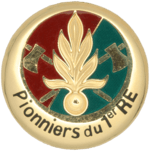

.jpg)
